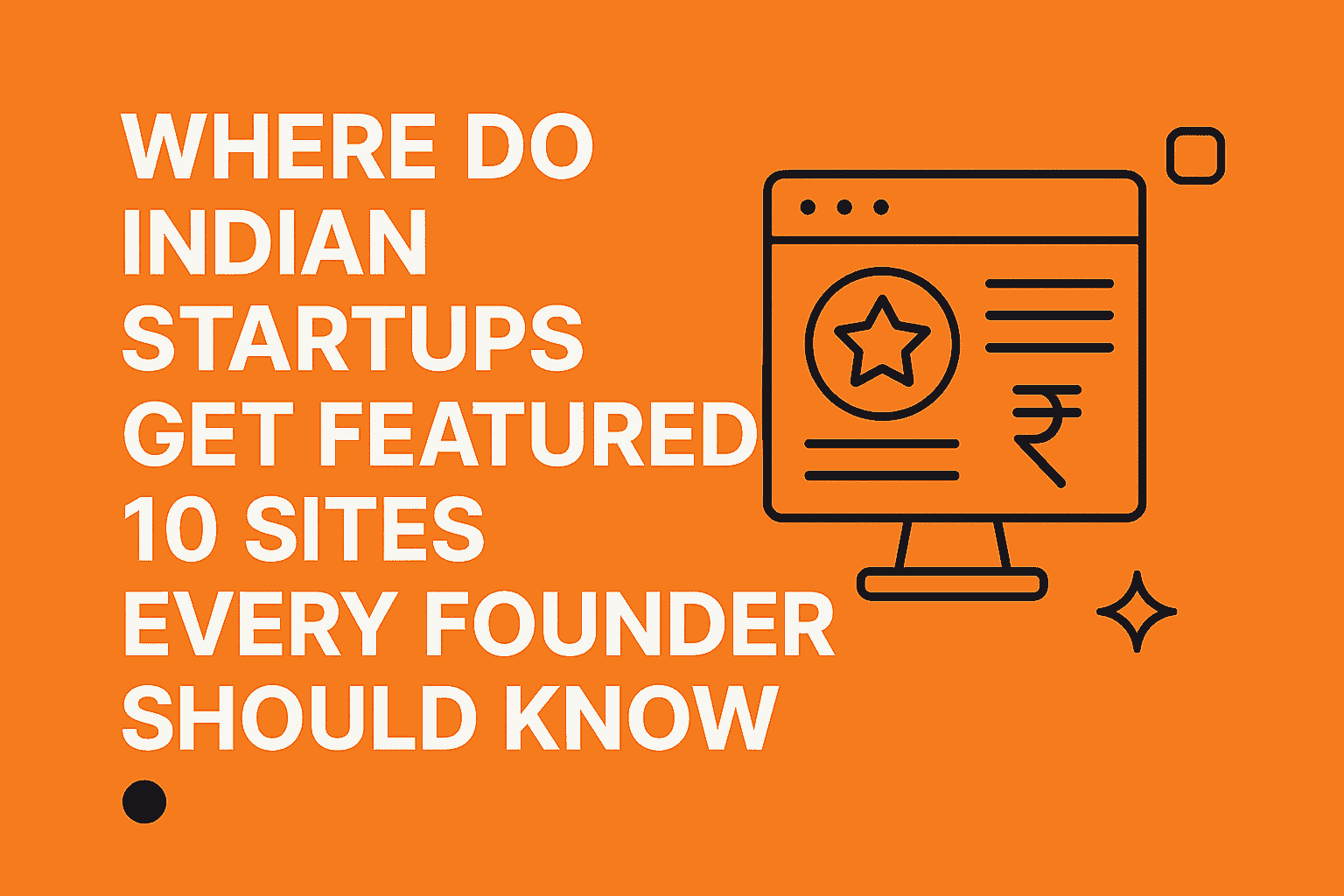In India’s fast-evolving startup ecosystem, getting your story featured in the media can transform your brand. A single article on the right platform can build your reputation, open investor doors, and boost public trust. The best part? You don’t need to spend lakhs on PR agencies.
How to Get Free Media Coverage for Your Startup in India.
A growing number of Indian founders are earning free media coverage by tapping into direct-submission news sites, writing their own stories, and connecting with editors personally. Here’s how to do it—and the exact platforms where your startup story can be published.
1. Know What Makes a Startup Story Worth Publishing
Founders often wonder: Why would anyone publish my story for free? Because real, human stories are valuable. Media outlets are hungry for:
- Founder journeys that show resilience or creativity
- Stories from Tier-2 or underrepresented communities
- Insightful thoughts on industry trends or startup culture
- Announcements about product innovation or team milestones
It’s not about bragging. It’s about relevance, emotion, and insight.
2. Write for the Right Platform
Each startup media site in India has a unique style. Choosing the right one for your type of story increases your chances dramatically.
For Personal Journeys: Try Entrepreneur Tales or The Entrepreneur Today
These platforms publish deeply emotional and human-centered founder stories. They love hearing how you started, what hardships you faced, and why your work matters.
- Entrepreneur Tales lets you “Submit Your Story” through their website.
- The Entrepreneur Today prefers founder profiles and values-led thought leadership. If you’ve faced adversity or built something mission-driven, this is your outlet.
For Regional or Grassroots Stories: Submit to The Entrepreneur India
This platform showcases startup founders from small towns and rural India. If you’re solving a local problem, building under constraints, or leading from a less-visible place—this site will likely be interested.
Pitch your journey in a way that ties your geography, community, or roots into your motivation.
For Analytical or Trend-Based Stories: Use Startup Chronicle or Startup Times
These sites publish more strategic content—like industry insights, market trends, or policy-related reflections.
- Startup Chronicle appreciates well-structured founder interviews that explore “why now,” sector evolution, or unique startup models.
- Startup Times accepts trend articles or short opinion pieces from founders who can speak on where the industry is going.
If you’re building in tech, sustainability, or a fast-evolving space, they’re a great fit.
For Milestone Updates or Press Releases: Submit to Startup Updates
This platform is ideal for announcing something: a product launch, team hire, collaboration, or expansion. It works like a newswire, but specifically for startups.
All you need is a short press release with:
- A one-line headline
- A 2–3 paragraph announcement
- A founder quote
- Contact details or a website link
It’s free, fast, and extremely startup-friendly.
For Practical Lessons and Tips: Write for Startup Magazine
This publication loves content that helps other entrepreneurs. Whether it’s about managing a remote team, surviving a pivot, or handling rejection, your real-world lessons will resonate.
You can either write a short essay or offer to be interviewed. Share three things you’ve learned—not just your wins, but the mistakes and moments that shaped you.
3. Structure Your Story Like a Journalist Would
No matter where you submit, your story should feel like it belongs in a magazine—not a pitch deck. Keep it clear and structured:
- Start with a hook: a moment of tension, a big question, or your startup’s origin
- Share your journey: challenges, pivots, unexpected lessons
- Conclude with what you’re building now and why it matters
Avoid buzzwords. Be honest, conversational, and helpful.
4. Send a Short, Personalized Pitch Email
Once your story is ready, email the editor or use the “Submit Story” page on their website. In your message:
- Introduce yourself in one line
- Say what your story is about and why it fits their platform
- Offer your draft or idea
- Add a short founder bio and links to your website or LinkedIn
Platforms like Startup Chronicle and The Entrepreneur India often list editor contact info at the bottom of their site or on their contact page.
5. Build Relationships on Social Media
Many editors and writers from these platforms are active on LinkedIn, Twitter (X), or even Instagram. You can:
- Comment on their posts
- Share their articles with your reflections
- Send a direct message (once you’ve engaged meaningfully)
It’s not about cold outreach—it’s about showing you’re part of the ecosystem.
6. Use Events to Build Visibility
If you’ve spoken at a startup event, pitched at a competition, or joined an accelerator—use that as your pitch hook.
Many platforms monitor such forums or events for new stories. If you’ve been recognized or shortlisted, mention it in your pitch email. It builds credibility without cost.
7. Repurpose Your Media Features
Once you’re featured on any of these platforms—share it everywhere:
- LinkedIn post (with a thank-you tag to the platform)
- Twitter announcement
- Email to your community or users
- Add it to your pitch deck or “About” page
The more you amplify it, the more value you get—and other platforms might follow up with more interest.
8. Be Consistent
Don’t stop after one feature. Make media part of your startup rhythm. Every quarter, plan a story or update. Track what you learned. Share when things didn’t go as planned.
Founders who consistently show up in the media often aren’t the ones with the biggest budgets—they’re the ones with the most authentic stories and persistence.
9. What to Avoid
- Don’t send long, promotional PDFs. Stick to story-focused writing.
- Don’t brag—reflect and teach.
- Don’t mass email editors. Customize your outreach.
- Don’t forget your CTA: include links, contact info, and where readers can find you.
Start telling your story. The spotlight is just one email away.



